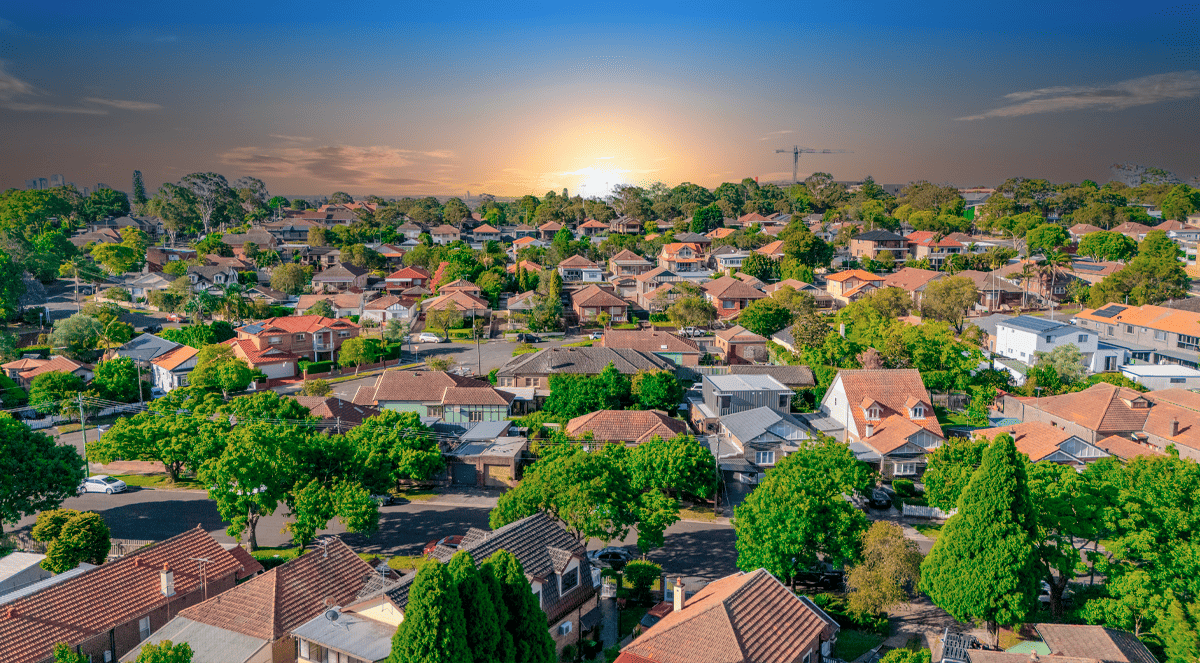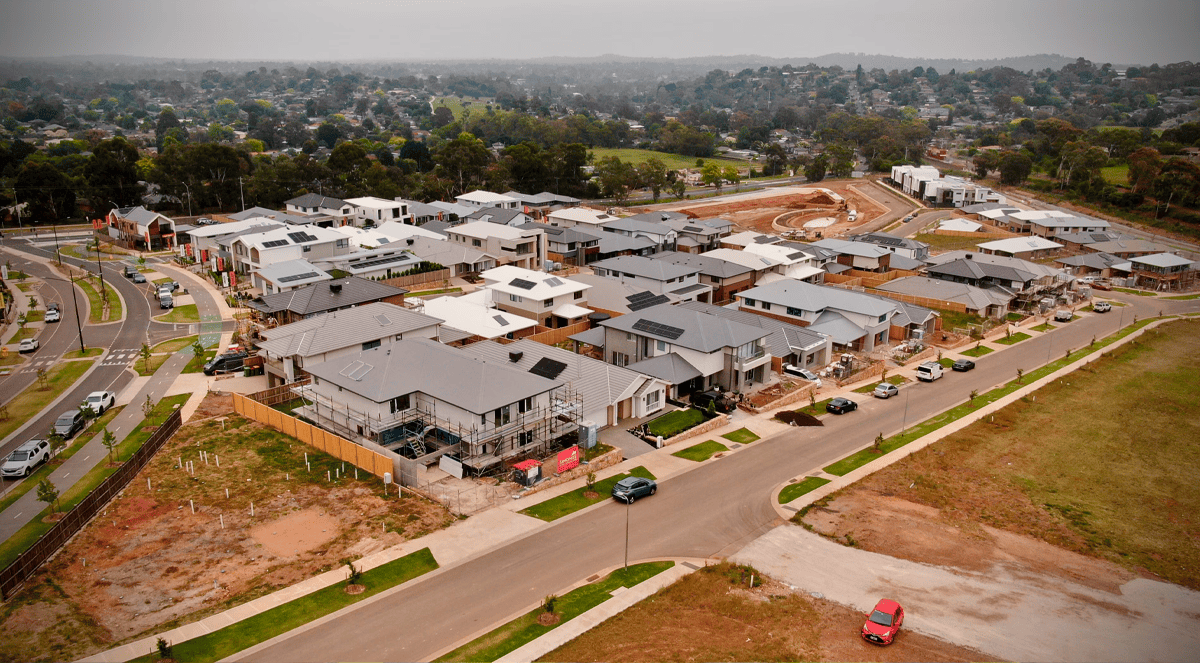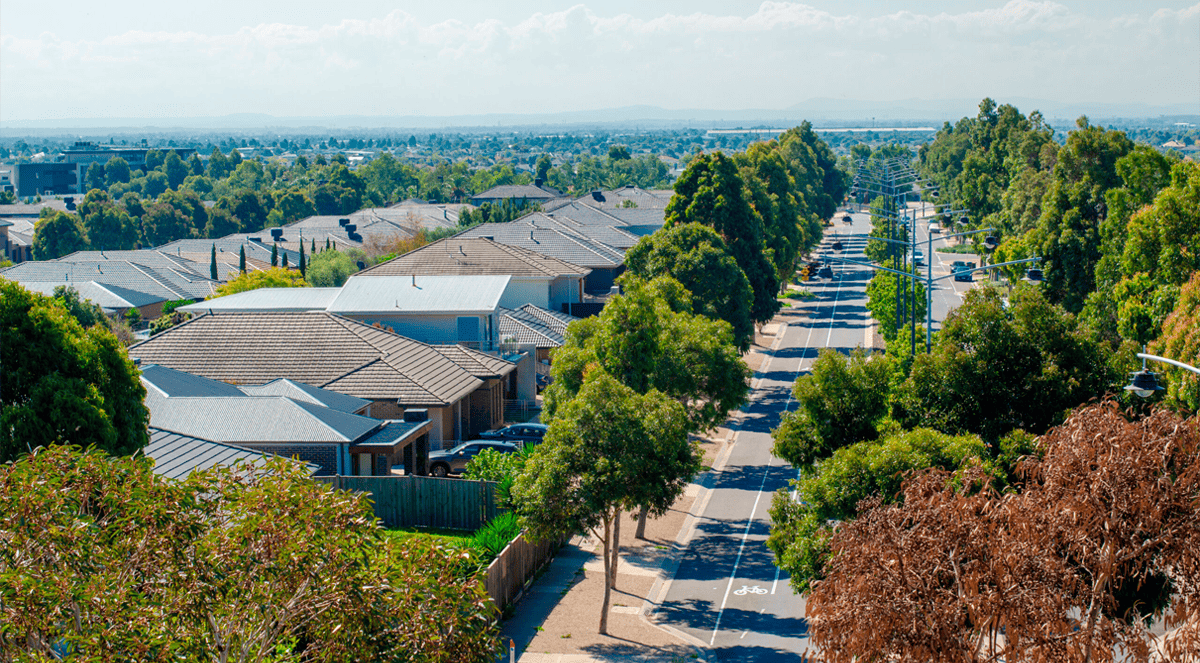Features > Property News & Insights > Market updates
Regional markets on the rise, but stability still in question
.png)
KEY POINTS
- Nearly 75% of suburbs in regional Australia saw property value increases over the past three months, while nearly half of capital city suburbs saw declines
- More affordable housing, regional migration, and remote work are driving regional demand, while rising listings and affordability issues are weakening capital cities
- Despite recent growth, regional markets have historically been more volatile, with concerns over housing supply, infrastructure, and boom-and-bust cycles
Property values in regional Australia continue to outpace the nation’s capital cities.
New data from CoreLogic shows nearly three-quarters of suburbs across regional Australia saw an increase in dwelling values over the three months until the end of January 2025.
In contrast, CoreLogic says almost half of capital city suburbs reported falls over the same period.
While the immediate outlook certainly looks bright for regional property, concerns remain about the long-term growth performance of regional markets and their volatility.
The details
CoreLogic’s latest Home Value Index figures show that dwelling values in Australia were unchanged during January 2025.
However, if you examine the figures more closely, there’s a clear divide between capital cities and the bush.
While capital city values fell 0.7% over the three months to the end of January, regional values “continue to display remarkable resilience” according to CoreLogic.
The data analytics firm says regional values were up 1.0% over the same period.
At a granular level, CoreLogic says 72.6% of the 1,456 suburbs analysed across regional Australia saw an increase in dwelling values over those three months, up from 66.2% in the previous quarter.
In contrast, the portion of capital city suburbs recording declines has increased, with almost half (48.6%) of the 2,200 suburbs analysed in January reporting quarterly falls.
Three in four suburbs across Sydney saw declines in value over the three months to January, while nine out of ten suburbs in Melbourne recorded declines.
“Quarterly declines are also starting to creep into Brisbane, Adelaide and Perth, as momentum leaves the stronger performing mid-sized capitals,” says CoreLogic Economist Kaytlin Ezzy.
“Worsening affordability, easing new overseas migration and a steady accumulation of for-sale listings has helped swing capital city selling conditions back in favour of buyers, with quarterly value decline becoming more common across the capitals, particularly across Sydney and Melbourne.”
Ms Ezzy says the strong performance of regional Australia when compared to the capitals can be attributed to improved relative affordability across the regions, an increase in listing levels across the capitals, and what she says is “a second wind in regional internal migration.”
“After underperforming (against) the capitals through much of 2023, the regions have regained much of the affordability advantage, with the capital city premium widening by around $50,000 over the past two years to around $240,000 in January.
“With demand skewing towards the more affordable end of the market, it’s not surprising to see value growth shift away from the capitals, towards the regions, as cash-strapped buyers look further afield for more affordable markets.”
Ms Ezzy says regional Australia is also benefiting from an increased flow of capital city residents seeking a “seachange” or a “treechange”, at the same time as there’s been a reduction in the number of people leaving the regions for the capitals.
“We’re almost five years on from the onset of COVID and it appears that remote and hybrid working arrangements are here to stay.
“With more people able to prioritise lifestyle over job location, the flow of internal migrants to regional markets has settled higher than the levels seen pre-Covid, helping to support housing demand,” the CoreLogic Economist says.
Research by the National Australia Bank listed the regional hotspots experiencing the strongest growth, with Queensland dominating with six regions in the top ten list.
The Regional Australia Institute says relocation rates from cities to regional communities has doubled over the past 18 months.
A nationwide survey conducted by the Institute also reveals that 40% of Australians residing in capital cities indicated they would consider moving to regional areas.
This marks a significant increase from the 20% recorded in a similar survey in May 2023.
A note of caution
However, Liz Ritchie, the CEO of the Regional Australia Institute, says this raises concerns around housing supply and infrastructure.
“Regional Australia is simultaneously experiencing two unprecedented transformations – a once-in-a-lifetime population shift and the net zero transition, which is increasing demand and need for improved services and infrastructure in regional communities.
“Many regions are already struggling with housing, particularly rental markets, and until region-specific policy measures are put in place, this will be further magnified,” she says.
Figures show that the regional rental vacancy rate decreased from 1.5% in 2023 to 1.3% in 2024.
3% is regarded as a normal or “balanced” market.
Additionally, building approvals have declined in regional communities, down by 9.4% between May 2023 and May 2024.
The Townsville example
The North Queensland city of Townsville often makes lists of property investment “hotspots” (like the NAB list above), with many highlighting its recent stellar capital value growth and good rental yields.
CoreLogic says dwelling values in Townsville were up 27.2% in 2024, one of the largest year-on-year value increases of any market nationally.
“While the jump in Townsville home values last year was significant, the context of such a large annual rise is equally as important,” says CoreLogic’s Head of Research, Tim Lawless.
“The upswing follows an 11-year slump where values fell by 27% between December 2007 and October 2018.”
In fact, Mr Lawless points out that it was only in December 2023 that Townsville housing values posted a nominal recovery to surpass the highs of 2007.
“Overall, the past seventeen years has seen Townsville home values rise by just 1.4% in annual compounding terms,” he says.
“Taking the story back a bit further, the 2007-18 slump was preceded by a six-year boom that saw housing values increase by 124%!”
As Mr Lawless points out, it’s been “quite the roller coaster ride” for Townsville's housing market, despite the city having one of the most diverse economic foundations of any regional city, with a major port, significant government services, a huge defence base and a major regional university.
“With a median dwelling value of just $553k, it's still quite an affordable market; the dwelling value to income ratio is 5.4 (well below Brisbane at 8.2 and the broader regional Qld average of 7.7), gross yields are above average at around 4.9% for houses and 5.7% for units, and homes are selling in a median of just 15 days,” Tim Lawless notes.
“The short-term outlook for the Townsville housing market looks quite positive, but the historical boom-and-bust cycle points to the potential for significant volatility over the longer term.”
Recent flooding in North Queensland, which saw significant damage in some lower-lying Townsville suburbs, has again raised the issue of prohibitively expensive disaster insurance for residents and investors in the city, which could dampen soaring property values.
According to social researcher McCrindle, over 66% of Australians live in the greater metropolitan area of Australia’s 8 capital cities.
The Federal government’s Centre for Population also expects the nation’s population to increase by 4.1 million over the next decade (largely from overseas migration), with most of this growth occurring in Sydney, Melbourne, Brisbane, and Perth.
Despite their recent value dips, over the longer term, Australia’s capital cities look set to continue to be stable drivers of economic growth, jobs and therefore housing demand, making them a safer property investment bet than the relative volatility of the regions.
Stay Up to Date
with the Latest Australian Property News, Insights & Education.




.png?width=292&height=292&name=Copy%20Link%20(1).png)
 SIGN UP FOR FREE NEWSLETTER
SIGN UP FOR FREE NEWSLETTER





.jpg?width=1920&height=1080&name=Warning%2c%20You%20Might%20Be%20Facing%20Higher%20Taxes%20Soon%20(1).jpg)





.png?width=1920&height=1080&name=Rate%20Drops%20Signal%20BIGGEST%20Property%20Boom%20in%20DECADES%20(1).png)

.jpg?width=1920&height=1080&name=Labor%20vs%20Liberal%20These%20Housing%20Policies%20Could%20Change%20the%20Property%20Market%20Forever%20(1).jpg)
.jpg?width=1920&height=1080&name=QLD%20Slashes%20Stamp%20Duty%20Big%20News%20for%20Investors%20%26%20Home%20Buyers%20(1).jpg)
.jpg?width=1920&height=1080&name=Trump%20Just%20Slapped%20Tariffs%20%E2%80%93%20Here%E2%80%99s%20What%20It%20Means%20for%20Australia%20(1).jpg)
.jpg?width=1920&height=1080&name=Federal%20Budget%202025%20More%20Debt%2c%20No%20Housing%20%E2%80%93%20Here%E2%80%99s%20What%20You%20Need%20to%20Know%20(1).jpg)
.jpg?width=1920&height=1080&name=Australias%20Housing%20Crisis%20is%20about%20to%20get%20MUCH%20Worse%20(New%20Data%20Warns).jpg)
%20(1).jpg?width=1920&height=1080&name=Australias%20RENTAL%20CRISIS%20Hits%20ROCK%20BOTTOM!%20(2025%20Update)%20(1).jpg)
%20(1).png?width=1920&height=1080&name=Is%20Adelaide%20Still%20a%20Good%20Property%20Investment%20(2025%20UPDATE)%20(1).png)
.jpg?width=1920&height=1080&name=RBA%20Shocks%20with%20Rate%20Cuts!%20What%E2%80%99s%20Next%20for%20Property%20Investors%20(1).jpg)
%20(1).jpg?width=1920&height=1080&name=I%20Predict%20The%20Feb%20Rate%20Cut%20(My%20Price%20Growth%20Prediction)%20(1).jpg)
.png?width=1920&height=1080&name=Why%20Property%20Prices%20Will%20Rise%20in%202025%20Market%20Predictions%20(1).png)
.jpg?width=1920&height=1080&name=Why%20Investors%20Are%20Choosing%20Apartments%20Over%20Houses%202%20(1).jpg)
.jpg?width=1920&height=1080&name=Why%20Rate%20Cuts%20Will%20Trigger%20A%20Property%20Boom%20(1).jpg)
.jpg?width=1920&height=1080&name=Retire%20On%202Million%20With%20One%20Property%20(Using%20SMSF).jpg)
.jpg?width=1920&height=1080&name=4%20Reasons%20Why%20You%20Should%20Invest%20in%20Melbourne%20Now%20(1).jpg)
%20(1).jpg?width=1920&height=1080&name=Old%20Property%20vs%20New%20Property%20(Facts%20and%20Figures%20Revealed)%20(1).jpg)
%20(1).jpg?width=1920&height=1080&name=Will%20The%20New%20QLD%20Govt%20Create%20a%20Property%20Boom%20or%20Bust%20(My%20Prediction)%20(1).jpg)
%20Scott%20Kuru%20(1).jpg?width=1920&height=1080&name=Inflation%20Hits%20Three-Year%20Low%20(Will%20RBA%20Cut%20Rates%20Soon)%20Scott%20Kuru%20(1).jpg)
.jpg?width=1920&height=1080&name=How%20to%20Buy%20Investment%20Property%20Through%20SMSF_%20The%20Ultimate%20Guide%20(1).jpg)
.jpg?width=1920&height=1080&name=Victoria%20Slashes%20Stamp%20Duty%20Melbourne%20Set%20to%20Boom%20Scott%20Kuru%20(1).jpg)
.png?width=1571&height=861&name=Are%20Foreign%20Buyers%20Really%20Driving%20Up%20Australian%20Property%20Prices%20(1).png)
.jpg?width=1920&height=1080&name=The%20Single%20Factor%20That%20Predicts%20Property%20Growth%20Regions%20(1).jpg)
%20Scott%20Kuru%20(1).jpg?width=1920&height=1080&name=My%20Prediction%20On%20Rates%20%26%20Negative%20Gearing%20(Market%20Crash)%20Scott%20Kuru%20(1).jpg)

-1.png?width=1920&height=1080&name=Major%20Banks%20Cut%20Rates%20Will%20RBA%20Follow%20Suit%20(Sept%20Rate%20Update)-1.png)
%20Scott%20Kuru-1.png?width=1920&height=1080&name=Rate%20Cut%20Coming%20What%20New%20Zealands%20Move%20Means%20for%20Australia%20(Sept%20Prediction)%20Scott%20Kuru-1.png)
%20(1).jpg?width=1920&height=1080&name=Buy%20when%20the%20interest%20rates%20are%20high!%20(Why%20you%20must%20buy%20now!)%20(1).jpg)
.jpg?width=1920&height=1080&name=Carms_Revised%20Taxes%20Due%20Aug%209%20YT%20Thumbnail02%20(1).jpg)
.jpg?width=1920&height=1080&name=Carms_Too%20Little%20Too%20Late%20Aug%207%20YT%20Thumbnail01%20(1).jpg)









.jpg?width=1920&height=1080&name=Carms_Rate%20Drop%20In%20July%20Jun%2010%20YT%20Thumbnail02%20(1).jpg)
.jpg?width=1920&height=1080&name=Carms_Own%20a%20Property%20V6%20Jun%205_YT%20Thumbnail%20(1).jpg)









.png?width=1920&height=1080&name=Artboard%201%20(3).png)






.jpg?width=1920&height=1080&name=YT%20thumbnail%20%20(1).jpg)

